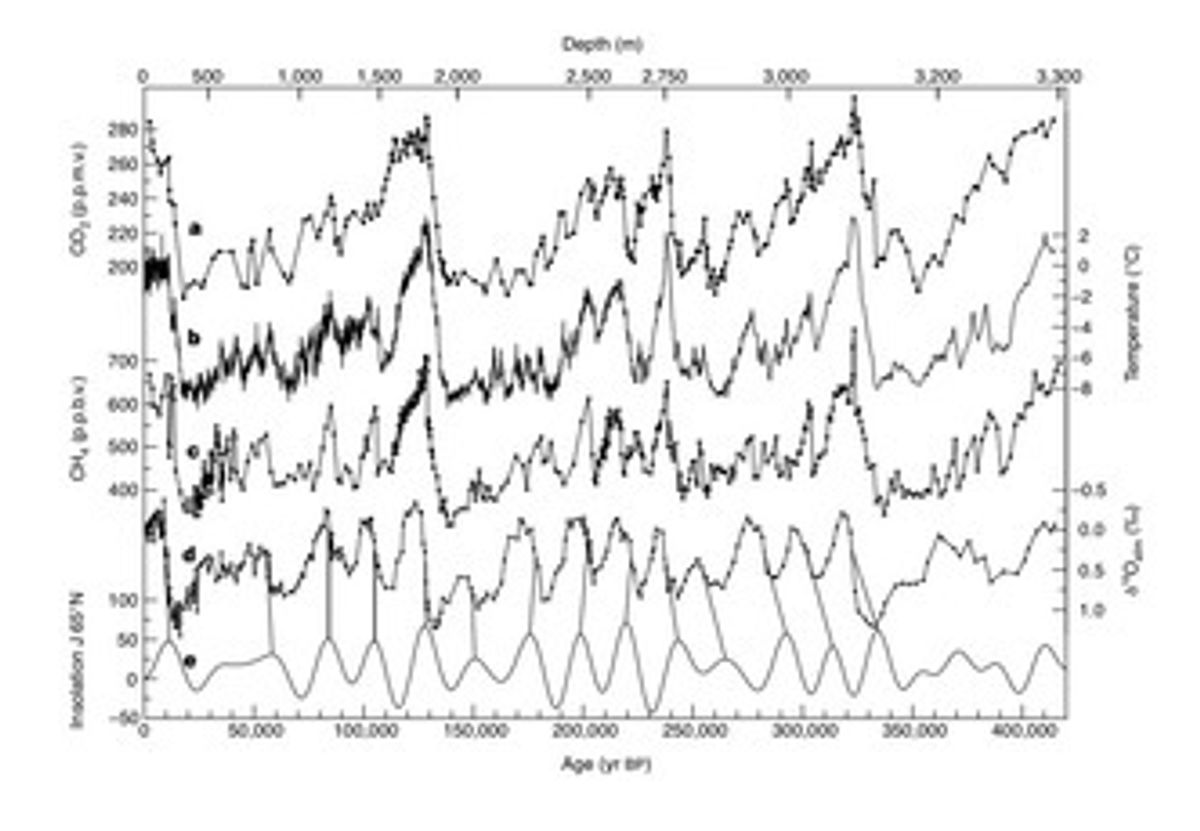Hardly ever now is energy strategy brought up without climate being mentioned in the very next breath. But it was only 13 years ago when an international team produced a record of atmospheric greenhouse gas concentrations and temperatures going back 420 000 years (illustration above). That chart, and its descendants, has been one of the most powerful elements of climate science. Climate change alarmists emphasize the lockstep relationship it revealed between greenhouse gases and temperatures. Climate skeptics emphasize puzzling leads and lags in the record, which sometimes suggest that temperature fluctuations caused changes in greenhouse gases, rather than the other way around.
A complicating factor has been the absence of a definitive record of carbon-14 concentrations in the atmosphere going back beyond 12 000 years or so, a record that could help corroborate or refute various theories about the last glacial period. This week, in Science magazine, an international team published a definitive account of yearly changes in atmospheric C-14 levels going back more than 50 000 years, based on sediments from a Japanese lake.
C-14 decays at a fixed rate, so its concentration in organic fossils can be used to date them. The rub is that atmospheric concentrations of C-14 vary from time to time, for a number of reasons. The new chart should—among other things—provide greater resolution for the periods in which the last glaciation and deglaciation occurred. It may also yield a more fine-grained history of solar activity, a complicating explanatory factor in climate changes.
Over a period of 52 800 years, Japan's Lake Suigetsu was surrounded by trees whose leaves dropped into the waters every year, leaving readily distinguishable layers. Because the lake bottom has been still and oxygen-free, those deposits have remained undisturbed for tens of thousands of years. The concentrations of C-14 found in the leaf layers yields a record that will improve dating of organics by as much as hundreds of years, according to Science.
Measurement of the carbon-14 concentrations was done using two independent methods at leading labs in Wales and Germany, the authors said during a press conference earlier this week. The team, led by C. Bronk Ramsey of Oxford University and Takeshi Nakagawa of the University of Newcastle, included representatives of those labs.
Besides yielding a well-calibrated record of radiocarbon levels and local terrestrial changes, Suigetsu will permit high-precision direct correlation with other terrestrial climate records, says Nakagawa. "This allows us to see how changes in climate in different parts of the world relate to one another, and particularly where there are leads and lags. Information like this is very useful for studying climate mechanisms."
In a companion commentary published in the current issue of Science, Paula J. Reimer notes that the new record "stretches back over the full length of the radiocarbon age scale"—that is, it covers the entire period in which C-14 fully decays. "The results are invaluable for improving the accuracy with which radiocarbon dates can be converted to the calendar time scale," she concludes.



